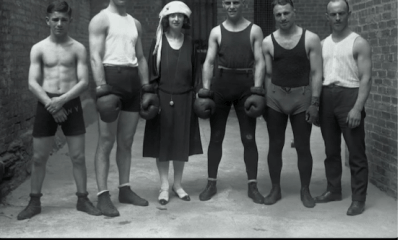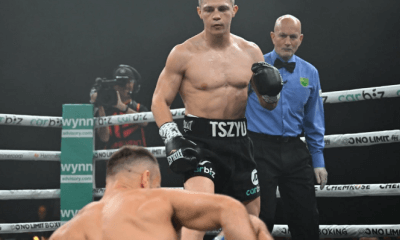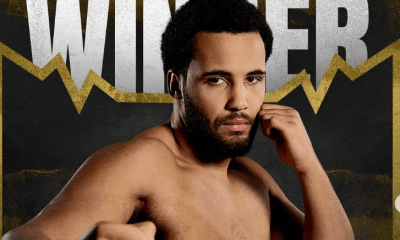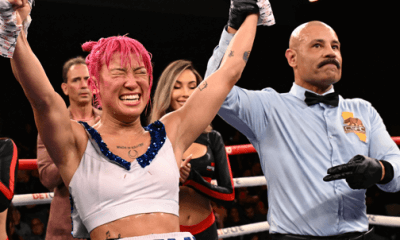Featured Articles
The Top Ten Light Flyweights of the Decade: 2010-2019
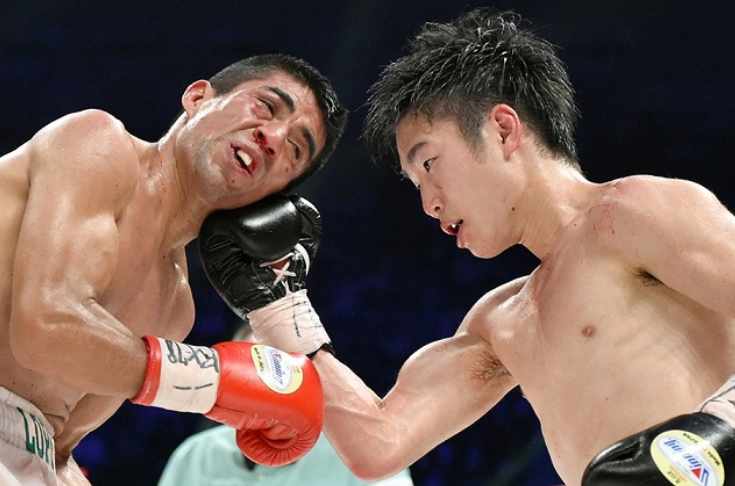
The Top Ten Light Flyweights of the Decade: 2010-2019
Light-flyweight was the most challenging division in this series by distance. The top three are split by a hair’s breadth. Below, there is a jumble of men who have met one another and have met one another’s conqueror in an ill-stitched mishmash of clues and hints as to superiority. It would be arrogant to consider any of my lists definitive – though I have certainly put in the hours – but this one, above all, is probably a thoroughly appraised impression rather than an attempt at definitive ordering.
This means you may occasionally find yourself surrounded by lists of names and rankings but I promise it is necessary to bring clarity, which is what this series is about. Those rankings are from Ring Magazine between January first 2010 and October 2012 at which point TBRB is founded and those rankings are preferred.
10 – Adrian Hernandez
Peak Ranking: 1 Record for the Decade: 14-4 Ranked For: 39% of the decade
Adrian Hernandez is most famous as a Naoya Inoue victim, but he was ranked the world’s best light-flyweight for a spell before that execution. Chief among the reasons for this was his brutal 2011 breakdown of Gilberto Keb Baas, the unlikely world’s #1 at that time. Hernandez found his way inside where Baas was willing to entertain him, to his great detriment and the chief cause of his being rescued by the referee and doctor in ten rounds.
More interesting was Hernandez’s two fight series against Suriyan Satorn, made necessary by his surprise loss to the Thai in December of 2011. Hernandez avenged the loss in a career’s best performance the following year. After losing the first-round, shipping some of the punches that caused him so much trouble the year before, Hernandez circled with the jab moving in behind uppercuts. Meathooks followed. A combination of these in violent arrangement sent a hurt Satorn down in the third; an even more vicious orchestration neatly closed the blinds in the sixth.
Two good wins, and throwing in a victory over a green Ganigan Lopez, rounds out a very decent decadal resume. Still, Hernandez’s grasp on the #10 spot is far from ironclad. There is Hiroto Kyoguchi, who beat Hekkie Budler; Budler himself who holds a fine win over Ryoichi Taguchi; and Javier Mendoza who fought and won a filthy fight with Milan Melindo. Any one of them would have been a valid inclusion, although if it hadn’t been Hernandez it would, for me, have been Yu Kimara.
That Hernandez defeated every light-flyweight he met in the decade aside from the immortal Naoya (for which he is most certainly not penalised) is what gets him over the line.
09 – Akira Yaegashi
Peak Ranking: 2 Record for the Decade: 16-5 Ranked For: 21% of the decade
Akira Yaegashi moved out of 105lbs and with the occasional exception, straight to 112lbs where he made his bones. In truth, though, 108lbs was where he belonged, something he proved after the disaster against Roman Gonzalez by weighing in comfortably at 107.5lbs against Pedro Guevara – to whom he also lost.
Yaegashi seemed finished and that is why it such delight that his best win, arguably his best in ring performance – the one that earns him the number nine slot – came a year later against the number two contender Javier Mendoza.
Mendoza, a puncher with a work-rate and heart to match, seemed Yaegeshi Mark II, a fresher version with better hitting. He came to wreck, seeking to march down the older man, to bury him like Gonzalez and Guevara buried him. Quite where Yaegashi produced the performance that followed is anyone’s guess.
In an echo of his match with Gonzalez, Yaegashi moved, rather well, before parking and foraging for punches. Mendoza, who had expected this, followed, and in the second and third did really good work but it is interesting to note that Yaegashi pulls out both rounds with straight right hands to the head, right hands that hurt Mendoza, and later in the fight begin to wither his desperate offence. Yaegashi won a wide decision despite Mendoza’s desperate insistence on contesting every round in a wonderful, brutal fight. The quality of that performance edges him in ahead of Hernandez.
08 – Pedro Guevara
Peak Ranking: 1 Record for the Decade: 29-3-1 Ranked For: 49% of the decade
Pedro Guevara’s 108lbs career is tough to appraise. He has three key wins that need to be examined and each is marked by a question of one kind or another. His first big win came over Mario Rodriguez, a fine fighter but one who was unranked at light-flyweight but was ranked, rather at strawweight. The last is over Ganigan Lopez, a fighter I admire but one who had the barest of claims to a top ten ranking at the time. The middle of these three victories locks him onto this list though, and ahead of Akira Yaegashi, for in December of 2014, Guevara defeated him in his Japanese stronghold.
The question mark here is over Yaegashi’s frame of mind, dropping down from flyweight to 108lbs to escape Roman Gonzalez who had brutalised him so completely three months earlier. What is not in doubt is the completeness of Guevara’s victory. Guevara did everything a grizzled trainer would tell a fighter to do: worked off the jab, claimed the centre of the ring, stayed busy, kept his hands high and his chin tucked in, goes to the body. It was mastery of Boxing 101 and combined with Guevara’s solid hitting and iron jaw it was enough. With nothing between them on the cards, Yaegashi folded to consistent pressure topped off with a vicious liver shot in the seventh.
Facing Lopez, Guevara fought a mirror image of himself, a persistent and competent southpaw who fought without fear but perhaps lacked Guevara’s organisation under fire, born, maybe, of that elite punch resistance. Guevara took the decision.
So, Guevara has good wins against good opponents but being workmanlike he perhaps did not inspire. This may help explain the three narrow decisions he dropped to John Riel Casimero, Yu Kimura and Kenshiro Teraji, which exercises some drag on his position here. Eight is as high as he can climb.
07 – Milan Melindo
Peak Ranking: 3 Record for the Decade: 18-5 Ranked For: 27% of the decade
If you set out to track down Milan Melindo’s astonishing one round knockout of Akira Yaegashi, commit to the full-length version. There is something of the tragi-comic about the pomp and ceremony of the Japanese television broadcast preparing the ground for what we know to be a disastrous first round loss for Yaegashi, who was eighteen months removed from what I have described as his best performance.
After menacing Yaegashi around the ring with his left hand for ninety seconds, Melindo catches his man with a gorgeous left hook counter that sends Yaegashi stumbling and down; bringing him on and then driving him back after he rose, Melindo then dropped him again with the left, this time an uppercut; with all his experience, Yaegashi somehow did not know to run and after surviving a right uppercut double left hook combo, he was pierced by the Melindo jab and sent down for a third and final time by a cameo from the right hand.
There was no way Yaegashi was going to survive Melindo that night had he made it out of the first round. Melindo’s left hand was fire and it was absolutely dialed in to Yaegashi’s face from the first bell.
For his next trick, Melindo outpointed the world class Hekkie Budler. Budler was moving up but would turn in arguably the best performance of his career in his very next fight against Ryoichi Taguchi. The fight was mired in controversy, but this was due to inappropriate use of adrenaline on the cuts Melindo suffered around his eyes rather than scorecard issues, and Budler’s claim to the contrary were rejected; in truth I saw an enthralling but one-sided fight that was made closer only by the impact of those cuts on Melindo’s boxing.
Two quality wins like this might have put him higher up this list, but he ran smack bang into a Japanese technician named Ryoichi Taguchi.
06 – Ryoichi Taguchi
Peak Ranking: 1 Record for the Decade: 17-3-2 Ranked For: 73% of the decade
Ryoichi Taguchi glided onto the world’s stage in late 2015, defeating ranked contender Alberto Rossel. It was not just the result that impressed, but the method. Taguchi won almost every single minute of each of the first six rounds, then dropped Rossel twice with bodypunches while threatening to shut out the game Peruvian. Rossel, who had travelled a long way to Japanese territory to absorb this thrashing, managed to bank a couple of rounds late in the fight to keep it semi-respectable, but Taguchi’s jab had controlled him and allowed him to introduce right uppercuts and straights late in the fight. It was a performance of maturity and authority from a fighter who was still inexperienced.
Sadly, Taguchi squandered much of the momentum he built here on alphabet mandatories, many of them of little meaning, before tying up with Melindo in December of 2017. Their fight was fascinating, a superbly balanced tactical exchange across the first six that the two split down the middle before Taguchi took over late. The key was finding a home for his right hand, which he achieved by moving slightly to his left with Melindo moving slightly on his right. All the while, Taguchi was sharpening his control of the range, an area where he excels, although he doesn’t enjoy the otherworldly accuracy that such fighters often do. He is technically astute though, at all ranges, and as he added a higher workrate to his slightly superior punching, the brave Melindo began to slip behind on the scorecards.
Surprisingly, Taguchi then lost to Budler which makes sense, if only retrospectively; the South African used aggression and experience to negate the control of the Japanese and eased him out by the narrowest of margins. There is a case, then, for Melindo to sit above Taguchi, but in the end, I prefer Taguchi’s direct head-to-head superiority over the triangular logic of Melindo beat Budler, Budler beat Taguchi. Taguchi’s longevity at the poundage tips the scale further.
05 – Donnie Nietes
Peak Ranking: 1 Record for the Decade: 17-0-3 Ranked For: 56% of the decade
I am a little uncomfortable with placing Donnie Nietes at number five and it was nip and tuck between he and Ryoichi Taguchi. The difference, such as it is, is Nietes’ unbeaten status, but that must be tempered by the disturbing fact that Taguchi, hardly a household name (in as much as any light-flyweight ever is), faced tougher competition than divisional leader Nietes. I feel sure, for what little it is worth, that Taguchi, too, would have gone unbeaten had they swapped opponents.
But so too would Nietes, in my view. This is where the limited value of speculations on head-to-head parameters come undone a little bit, but Nietes, with his own reams of experience, almost certainly wouldn’t have been outhustled by Budler; the raw stats feel more pertinent here then and the raw stats favour Nietes.
Nor is Nietes totally devoid of quality in his 108lbs resume, with three names ringing out: serial-thriller Francisco Rodriguez Jnr., and the ranked men Moises Fuentes and Ramon Garcia Hirales. Emerging from the 105lb division, Nietes nevertheless continued to stalk his 108lb opposition and his sharpshooting and poise spooked Hirales early. Nietes swept the first five boxing well within himself, opening up his southpaw opponent with rights to the body thrown often from maximum distance; it’s hard to count these as risks when Nietes throws them such is his judgement of a punch.
There were hints, though, in the second half of that fight that 108lbs was going to prove tougher for Nietes and it proved to be the case in his sharp draw against Moises Fuentes in 2013. Fuentes, a big, rangy light-fly faded badly down the stretch allowing Nietes back into a fight in which he was all but cut adrift. A draw, reflected on my card, was the result. Nietes learned the lesson though and in a rematch, he drew his Mexican opponent onto a narrow pivot from which he could not recover organisationally as quickly as Nietes. Forced into overt aggression by a quick, teasing Nietes he was walked onto persistent counters until one hurt him at which point an undisciplined Nietes – docked a point for landing against a downed opponent at the first knockdown – scored a sensational knockout win, half moving across himself as though to throw a left before booming out a disguised right.
It was an impressive performance, a strategy designed for a bigger opponent, elements of which he drew upon for his decision victory over Francisco Rodriguez in 2015, but essentially, Nietes was far too ready to let the WBO tell him who to fight. This inevitably led to an underwhelming legacy at the poundage but I feel the unblemished record is good enough for the number five spot.
04 – Giovani Segura
Peak Ranking: Ch. Record for the Decade: 11-3 Ranked For: 14% of the decade
Giovani Segura’s career barely overlaps with 108lbs in the decade to hand; he managed just 3-0. There are two reasons we find him in the top five. Firstly, he is the only lineal champion on the list and secondly, two of those wins were over the legendary Ivan Calderon. Calderon, a Rolls Royce of a pugilist, may have been ready to be taken but someone had to do the taking and to break his thirty-four-fight unbeaten streak in the process. As such it was no small matter and clearly of greater legacy benefit than victories over Moises Fuentes and Francisco Rodriguez.
The first fight was painful to watch as a Calderon fan but there was no questioning Segura’s heat, lungs or the fire in his belly. None of Calderon’s punches were beyond him through the first four rounds while he consistently and forcefully laid down his own work. That work began to tell in the fifth and by the middle of the round, Calderon, who moved as beautifully and consistently as any fighter on earth, was propping himself on the ropes and in the corner desperately trying to outfight a tormentor he could not master. Segura was savage and brilliant, walking the dancer down, scowling, invincible, brutal. Segura finally folded him like old pipe in eight.
Segura was even more impressive in the rematch. The puncher had discovered how Calderon, the boxer, moved and it was only a matter of time. Segura fouled him, beat him back, enforced his will and blasted Calderon out of the division, once more along the ropes, once more with that eye-watering body-attack.
At this weight, those two generational wins are more than enough for a top five placement.
03 – Naoya Inoue
Peak Ranking: 1 Record for the Decade: 19-0 Ranked For: 13% of the decade
Naoya Inoue fought exactly four times at 108lbs, excluding his debut; worse, two of those combats were wasted on two fighters unqualified to share the ring with him, even at what was an early stage of his career. Nevertheless, Naoya defeated no fewer than two men who made this list and in the shape of Adrian Hernandez, the world’s number one light-flyweight. The addition to what we’ll politely call supplementary knockouts over Jerson Mancio and Wittawas Basapean is just enough to make the number three spot reasonable, although I dithered with placing him at number four right up until the final moment.
Stepping up to 108lbs, Naoya met the lowly ranked Ryoichi Taguchi out of the gate in an all-Japanese money-maker he probably expected to be a little easier than it was. Taguchi’s iron jaw and technical excellence had yet to be fully recognised and realised but in truth, he was well on his way and that meant Naoya had marched straight into one of the best 108lb men of his generation. Theirs was a stiff contest, clearly won by Naoya but far from one-sided. In the end, Naoya attacked over more planes of movement than Taguchi; left-hook low, straight-right hand high, the beginnings of the fluid, dynamic, attacking prowess that would throw the world at his feet.
Less than a year later, he met divisional number one Adrian Hernandez and I would suggest this was the fight in which he summited. Naoya has made minor adjustments since his thrashing of the experienced Hernandez, but this was the fight where his offence migrated from deadly to seemingly irresistible. Hernandez, for all his guile, was rent.
In fact, for the first time, Inoue looked otherworldly. This might make his sitting at three questionable. The top three are incredibly close – there is almost nothing between them in a sense that has been replicated on any of the other lists. For now, a summary: Naoya Inoue fought too few fights against too few top men to be ranked #1 or #2.
02 – Roman Gonzalez
Peak Ranking: 1 Record for the Decade: 25-2 Ranked For: 28% of the decade
So, the top three can legitimately be rearranged in any order and their ordering will, as always, be defined by the accents placed upon criteria. What has landed the immortal Roman Gonzalez at #2?
In essence, Roman, like Naoya, has two wins that interest us but much more filler than Naoya; there is the beginning. As to those wins, the second of them is relatively unimpressive in that it is Ramon Garcia Hirales, and arguably not the prime version. It should be noted though that Roman steam-rolled him, where Nietes needed twenty-one rounds to get him out of there. It is his other victory that brings him the slot, however.
Juan Francisco Estrada, oddly enough, was not ranked at light-flyweight at the time he and Roman fought but their fight was a generational one between present and future pound-for-pounders at their physical peaks. Here is another matter for preference; do you lean towards rigorous application of the guideline that ranked fighters are the ones whose defeat carry most meaning? Or do you make room for how a fighter was perceived in the immediate wake of a contest?
Certainly Estrada would rocket to the top of the sport behind his superb effort against Roman, who he stretched to his seeming limit in taking a decision. In my view this victory qualifies as generational which outstrips Naoya’s victory over Hernandez, even though Hernandez was ranked number one and Estrada was not ranked at all. Where you land on this question will determine where Gonzalez will land.
It should be remembered, however, that Gonzalez fought around twenty contests at 108lbs, for all that the focus here is on the end of that run and many of those fights were early in his career and near-meaningless. Comparing that resume directly to Noaya’s, he clearly ranks higher for me; and comparing it directly to the man at #1 makes Roman a perfect fit for #2.
01 – Kenshiro Teraji
Peak Ranking: 1 Record for the Decade: 17-0 Ranked For: 26% of the decade
Kenshiro Teraji boxes under the best moniker of any active fighter so far as I am concerned – “The Amazing Boy” comes from a fighting lineage and the temptation is to say that it shows. Teraji’s ambition though was more naked than his father’s ever was and in just his twelfth fight he met an experienced, tough Mexican in Ganigan Lopez, probably the two things at the very top of the list marked “things to avoid” for light-flyweight prospects. It showed. Teraji was involved in a desperate, knife-edge scrap which he won by the narrowest of margins on the scorecards. It was no robbery, but it is perhaps safe to say that the result would not have been the same in Mexico (my card read 114-114).
It has been one of the joys of the light-flyweight decade, however, watching Teraji improve. It has been fast and the consequences have been brutal. Nearly a year to the day after their first fight, Teraji took the extraordinary step of rematching Ganigan. This is not normal. A prospect who squeaks by elite opposition generally chalks it up and moves on but Teraji is a different type of man. In the rematch, he produced a stunning adjustment. Rather than stalk on his toes early, he immediately gave ground, but in small increments, bouncing in and out but to create dynamism in the position rather than specifically to score points. He moved across Ganigan, opening himself up to the Mexican’s jab, allowing his opponent to bag the first round with his right alone. But it also opened up Ganigan’s body for his own right hand. He landed this to such brutal effect in the second that Ganigan was only beginning to think of rising, his face locked in a grimace, at the count of ten. This is a thinking fighter, or a listening fighter with a thinking coach.
In between his fights with Ganigan (key in charting his rise and rise), Teraji was not idle. Instead, he met with the Pedro Guevara, then ranked the best light-flyweight in the world. Enormously ambitious, the WBC open scoring nonsense robbed us of what should have been a tension-drenched contest as Teraji strived and in the middle rounds succeeded in getting Guevera under control. Although he never seemed entirely safe, his reliance upon his jab to out-basic Guevera led the way to a gorgeous beltline attack in the seventh and bagged enough rounds on my card to rescue him from what looked like a bad start. He deserved the majority decision he received. Here was a learning fight and one that bore immediate fruit in the form of that knockout of Lopez.
In 2018 he buried a second man from this list in the shape of Milan Melindo, still among the five best light-flyweights on the planet but outclassed and savaged mercilessly until the ringside doctor and referee colluded to halt the beating. This was the Amazing Boy’s peak performance (so far), sharpshooting of the highest standard, the right hand in particular standing comparisons with Naoya’s and Roman’s.
Since, Teraji has disappointed just a little. In the three remaining fights for him that decade, he shut out the underqualified, granite-jawed Saul Juarez and outright slaughtered Jonathan Taconing and Randy Petalcorin, neither of whom belonged in a ring with him, in four. Still, of the three contenders for the number one spot, Teraji has the best record against ranked contenders, defeated as many men listed here as anyone, and most of all showed meaningful commitment to the division. Naoya and Roman staged forays into the 108lb division and departed for other divisions. Their reward is to be ranked in those other divisions as well as this one; Teraji though is the pre-eminent fighter of the poundage from this decade. He is young enough and good enough that the early part of the next decade will likely belong to him too.
The other lists:
Check out more boxing news on video at the Boxing Channel
To comment on this story in the Fight Forum CLICK HERE
-

 Featured Articles4 weeks ago
Featured Articles4 weeks agoThe Hauser Report: Zayas-Garcia, Pacquiao, Usyk, and the NYSAC
-
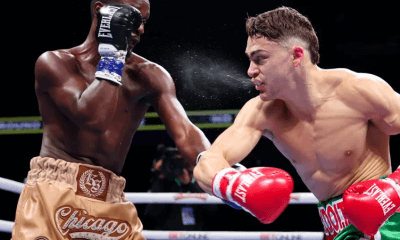
 Featured Articles3 weeks ago
Featured Articles3 weeks agoOscar Duarte and Regis Prograis Prevail on an Action-Packed Fight Card in Chicago
-
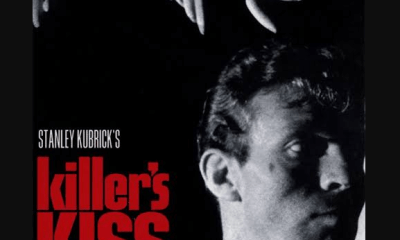
 Featured Articles2 weeks ago
Featured Articles2 weeks agoThe Hauser Report: Cinematic and Literary Notes
-
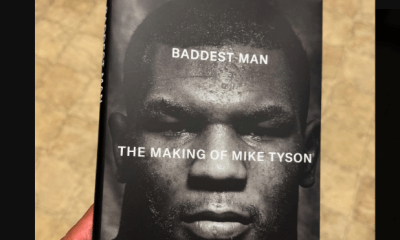
 Book Review2 weeks ago
Book Review2 weeks agoMark Kriegel’s New Book About Mike Tyson is a Must-Read
-

 Featured Articles4 weeks ago
Featured Articles4 weeks agoRemembering Dwight Muhammad Qawi (1953-2025) and his Triumphant Return to Prison
-
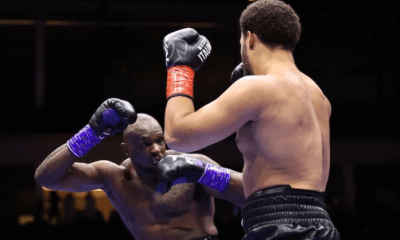
 Featured Articles7 days ago
Featured Articles7 days agoMoses Itauma Continues his Rapid Rise; Steamrolls Dillian Whyte in Riyadh
-
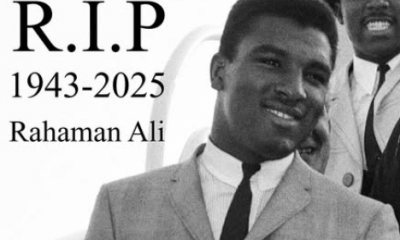
 Featured Articles3 weeks ago
Featured Articles3 weeks agoRahaman Ali (1943-2025)
-
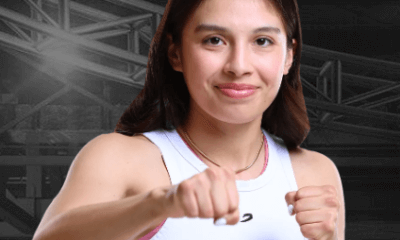
 Featured Articles3 weeks ago
Featured Articles3 weeks agoTop Rank Boxing is in Limbo, but that Hasn’t Benched Robert Garcia’s Up-and-Comers




